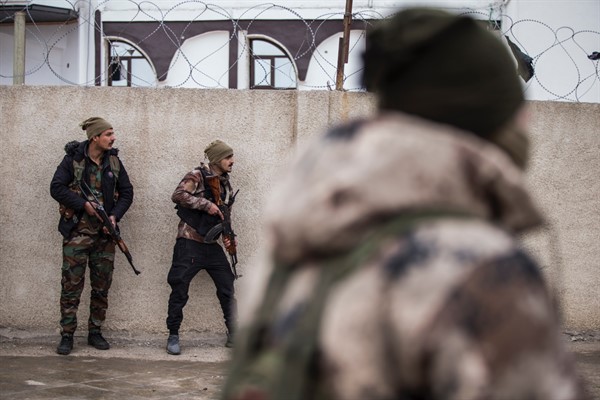The Islamic State, or ISIS, made global headlines recently on account of two significant developments in Syria: a prison uprising in Hasakeh in late January and the raid by U.S. special operations forces a week later, on Feb. 3, that resulted in the death of ISIS leader Abu Ibrahim al-Hashimi al-Qurashi.
Both events have focused attention on the Islamic State’s capacity to wage insurgency and mobilize militants in its former territory. But another factor that is potentially more important in assessing the group’s future prospects is the large number of ISIS members and sympathizers languishing in detention nearly four years after the group’s territorial defeat.
Analysts and scholars of armed groups have tracked the Islamic State’s attacks in meticulous detail since that defeat, and their findings show that despite alarming attacks like the Hasakeh uprising, the group’s overall ability to inflict significant damage on local populations has diminished over time. But a strictly military analysis insufficiently accounts for the popular and elite support the group retains, as well as the underlying dynamics that paved the way for the emergence of ISIS and al-Qaida before it.

